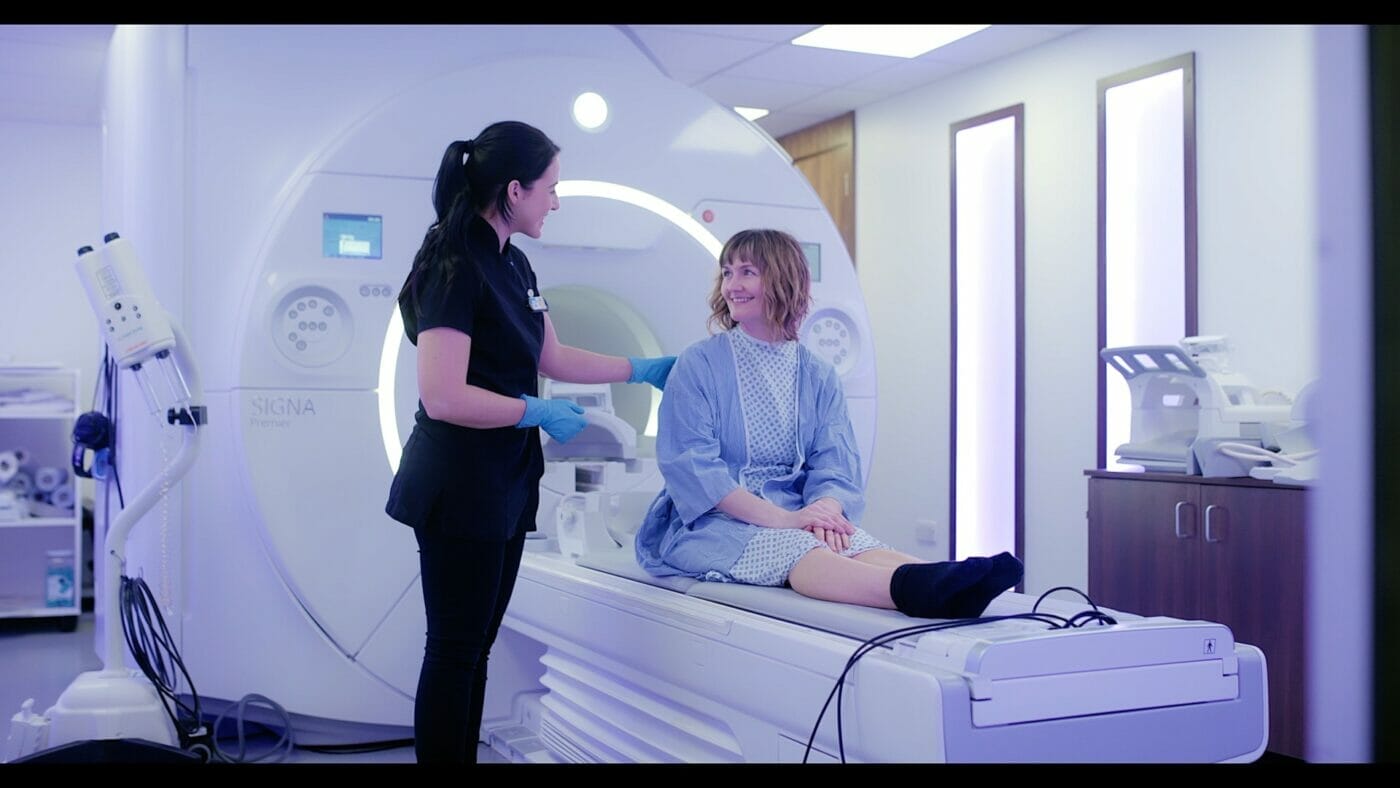Using MRI Neurography to Diagnose and Treat Endometriosis with Pelvic Nerve Involvement
Endometriosis affects millions of women, often leading to chronic pain and nerve-related symptoms. When endometriosis affects the pelvic nerves, it can cause severe pain in the legs, pelvis, and abdomen, which can be challenging to manage and diagnose. MRI neurography, a specialised imaging technique, is increasingly used to provide a clearer view of nerve structures and detect endometriosis involving the nerves. This article explains how MRI neurography aids in diagnosing and treating endometriosis with pelvic nerve involvement, offering valuable insight for patients seeking effective ways to treat their pain and find relief.
Understanding Endometriosis and Its Effect on the Pelvic and Peripheral Nerves
Endometriosis is a chronic condition where tissue similar to the uterine lining grows outside the uterus. This tissue can attach to other organs, such as the ovaries, fallopian tubes, and bladder. In some cases, endometriosis affects nerves in the pelvis, such as the sciatic, pudendal, and obturator nerves, resulting in nerve pain that radiates to the lower back and legs. This type of pain, often described as “neuropathic pain,” can be difficult to identify and requires advanced imaging for accurate diagnosis.
What is MRI Neurography?
MRI neurography is an advanced imaging method specifically developed to visualise nerves and detect any abnormalities affecting them. MRI neurography provides a clear view of the nerves, including the spinal cord, allowing clinicians to identify nerve inflammation, entrapment, or damage that might not appear on standard imaging. Unlike traditional MRI, which focuses on larger structures, MRI neurography specifically provides a clear view of the nerves, allowing clinicians to identify nerve inflammation, entrapment, or damage that might not appear on conventional MRI imaging. Through the use of specialist equipment and high resolution imaging sequences, MRI neurography offers precise information that can help guide treatment decisions when endometriosis with pelvic nerve involvement is suspected.
How MRI Neurography Supports Diagnosis in Endometriosis with Chronic Pain and Nerve Involvement
When assessing endometriosis with suspected nerve involvement, MRI neurography offers several key benefits:
- Identifies Nerve Involvement in Endometriosis: MRI neurography provides a detailed view of how endometriosis may be impacting pelvic nerves. This can include direct involvement, such as nerve entrapment by endometriotic tissue, or indirect effects, like inflammation impacting nearby nerves.
- Determines the Extent of Endometriosis Spread: Endometriosis may extend into less visible or more complex areas. MRI neurography can reveal these hidden regions, offering a comprehensive look at the pelvic region, which is often crucial for precise diagnosis.
- Differentiates Nerve Pain from Other Pain Types: Endometriosis can produce both muscular and neuropathic pain, which involves complex interactions between the brain and spinal cord. MRI neurography helps clinicians distinguish between these types of pain, allowing for more targeted treatment.
- Assists in Surgical Planning: In cases where surgery is required, MRI neurography can help the surgical team identify areas where endometriosis may involve pelvic nerves. This information is vital for planning a procedure that targets endometriosis while preserving nerve function and minimising risk.
What to Expect During an MRI Neurography Scan
If your consultant recommends MRI neurography, here’s what to expect:
- As with most MRI scans, you will be asked some important safety questions before your scan, and you will likely be asked to change into a gown. Metal items will need to be removed to prevent unwanted artefacts on the imaging.
- MRI neurography may take around 45 to 60 minutes to complete. During this time, you will need to remain still on the table. The machine makes tapping or buzzing sounds, which are perfectly normal, but you will be given ear protection to protect your hearing. The radiographers will remain in contact throughout your scan and talk to you to make sure you are OK.
- In many cases, a contrast dye may be injected to enhance the visual detail of nerves and surrounding tissues. This dye is generally safe and helps produce high-quality images with additional detail that would not be visible without the use of a contrast dye. We will always check to make sure there is no reason why contrast should not be given as part of your pre-scan checks.

Benefits of MRI Neurography for Accurate Diagnosis in Endometriosis Patients
MRI neurography is especially beneficial for patients dealing with complex or persistent symptoms of endometriosis with suspected nerve involvement. Key advantages include:
- Accurate Diagnosis for Early Intervention: By pinpointing the affected nerves, MRI neurography allows for a more precise diagnosis, enabling early intervention and preventing further nerve damage.
- Improved Pain Management: Recognising nerve involvement enables clinicians to provide more targeted pain management, whether through nerve blocks, specific medications, or targeted physiotherapy.
- Enhanced Surgical Planning: If surgery is part of the treatment plan, MRI neurography helps surgeons locate nerves impacted by endometriosis, supporting a procedure that minimises risk to nerve function.
- Informed Treatment Decisions: MRI neurography provides patients with a clear understanding of their condition, empowering them to make informed decisions about their care in consultation with their medical team.
Limitations of MRI Neurography
While MRI neurography is a powerful tool, it may not be necessary for all patients with endometriosis. This imaging is typically recommended if there is a suspicion of nerve involvement, based on symptoms such as radiating leg pain, pelvic pain, or numbness.
Treating Endometriosis with Pelvic Nerve Involvement
Endometriosis with pelvic nerve involvement can be a complex condition to treat, requiring a multidisciplinary approach. Treatment options may include medications, therapies, and surgical interventions.
Medications and Therapies
Managing endometriosis symptoms, particularly those involving pelvic nerves, often begins with medications. Pain relief medications, such as nonsteroidal anti-inflammatory drugs (NSAIDs) like ibuprofen, can help alleviate acute pain. Hormone therapy and gonadotropin-releasing hormone (GnRH) agonists are also commonly prescribed to reduce endometrial tissue growth and relieve pain.
Physical therapy, especially pelvic floor physical therapy, plays a crucial role in managing endometriosis symptoms. This therapy focuses on strengthening and relaxing the pelvic floor muscles, which can help relieve pain and improve bladder and bowel function. Additionally, some patients find relief through alternative therapies such as acupuncture and herbal supplements. However, it is essential to consult with a healthcare provider before starting any new therapies to ensure they are safe and effective.
Surgical Options
For patients with severe symptoms that do not respond to medical treatment, surgical options may be considered. Using the images obtained during MRI neurography for guidance, laparoscopic surgery is a minimally invasive procedure used to remove endometrial lesions, providing significant pain relief. In more severe cases, a hysterectomy or removal of the ovaries may be necessary to manage symptoms effectively.
Discussing the risks and benefits of surgical options with your consultant is crucial to determine the best course of treatment. Each patient’s situation is unique, and a tailored approach is essential for optimal outcomes.
Managing Chronic Pain
Chronic pain is a common symptom of endometriosis, and managing it requires a comprehensive approach. Here are some strategies to help manage chronic pain:
- Pain Medications: Over-the-counter pain medications can help relieve pain. In some cases, prescription pain medications may be necessary to manage more severe pain effectively.
- Physical Therapy: Physical therapy, particularly pelvic floor physical therapy, can significantly improve bladder and bowel function and relieve pain. This therapy focuses on exercises and techniques to strengthen and relax the pelvic floor muscles.
- Alternative Therapies: Alternative therapies such as acupuncture and cognitive-behavioural therapy (CBT) may be considered to help manage pain and improve quality of life. These therapies can provide additional relief and support overall well-being.
- Lifestyle Changes: Making lifestyle changes such as maintaining a healthy weight, exercising regularly, and practicing stress-reducing techniques can help manage chronic pain. These changes can improve overall health and reduce the impact of endometriosis symptoms.
- Accurate Diagnosis: An accurate diagnosis is crucial in managing chronic pain. Diagnostic tests such as magnetic resonance imaging (MRI) neurography can help determine the underlying cause of pain, allowing for more targeted and effective treatment.
- Multidisciplinary Approach: A multidisciplinary approach involving healthcare providers from different specialties, such as pain management, physical therapy, and psychology, may be necessary to manage chronic pain effectively. This collaborative approach ensures comprehensive care and support for patients.
By incorporating these strategies, individuals with endometriosis and chronic pain can improve their quality of life and manage their symptoms effectively.
Is MRI Neurography Right for Your Pain Management?
For many patients with endometriosis and nerve-related pain, MRI neurography can provide essential insights that standard imaging methods may miss. If you’re experiencing complex symptoms or if your consultant suspects that endometriosis may be impacting your pelvic nerves, MRI neurography could be a valuable diagnostic tool.
Understanding the role of nerve involvement in endometriosis pain allows for more effective treatment planning, which can improve quality of life. To determine if MRI neurography is appropriate for you, speak with your consultant or contact the Queen Square Imaging Centre at imaging@queensquare.com for further information.
Knowledge is a vital part of managing endometriosis and we hope this article will enable you to make well-informed decisions about your care.


